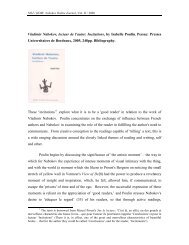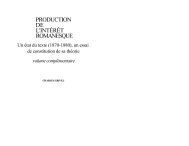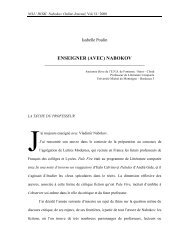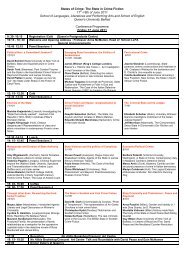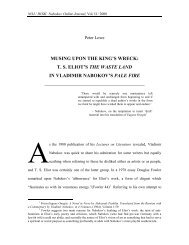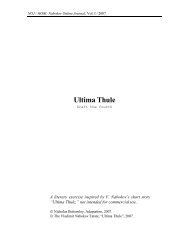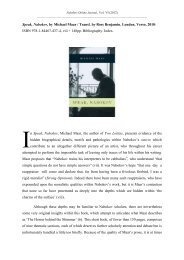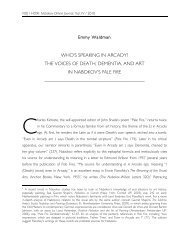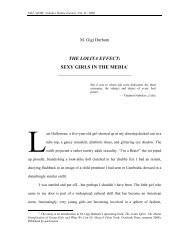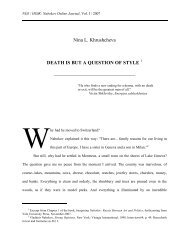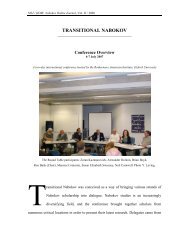domesticated translation: the case of nabokov's translation of alice's
domesticated translation: the case of nabokov's translation of alice's
domesticated translation: the case of nabokov's translation of alice's
Create successful ePaper yourself
Turn your PDF publications into a flip-book with our unique Google optimized e-Paper software.
NOJ / НОЖ: Nabokov Online Journal, Vol. II / 2008<br />
strategy <strong>of</strong> localization which means that <strong>the</strong> translator attempts “to anchor a reference<br />
firmly in <strong>the</strong> culture <strong>of</strong> <strong>the</strong> target audience” (Davies 2003: 72). Obviously, he considered<br />
expressions typical <strong>of</strong> <strong>the</strong> English cultural background to be incomprehensible to <strong>the</strong><br />
Russian readers and decided to erase all possible awareness <strong>of</strong> a different cultural<br />
content. Undoubtedly, this decision created a sense <strong>of</strong> familiarity and helped Russian<br />
readers to enter <strong>the</strong> magnificent world <strong>of</strong> Carroll’s book and to identify <strong>the</strong>mselves with<br />
<strong>the</strong> characters <strong>of</strong> <strong>the</strong> story. On <strong>the</strong> o<strong>the</strong>r hand, an almost complete familiarization <strong>of</strong><br />
cultural items can hardly serve as a tool for learning about foreign cultures, times and<br />
customs.<br />
Nabokov’s substitutions extend to <strong>the</strong> smallest details <strong>of</strong> Russian cultural milieu.<br />
For instance, he used both Russian measures <strong>of</strong> length and monetary units. When Alice<br />
falls into <strong>the</strong> rabbit hole, she talks about distance in terms <strong>of</strong> miles. Russian children<br />
might not be familiar with “miles,” but <strong>the</strong>y had to realize that <strong>the</strong> word referred to a very<br />
long distance. Nabokov used <strong>the</strong> word “versta,” choosing a more easily understandable<br />
concept <strong>of</strong> distance for Russian children. Connolly notes that <strong>the</strong> sum <strong>of</strong> one hundred<br />
pounds becomes one thousand rubles and shillings and pence are converted to kopecks<br />
(Connolly 1995: 19).<br />
Food items, 5 which <strong>of</strong>ten play an important role in children’s books, are also<br />
replaced with Russian analogs. In Alice, food is <strong>of</strong>ten used as a way <strong>of</strong> gaining entry into<br />
<strong>the</strong> o<strong>the</strong>r world. Some items, well-known in Russia at that time, such as “roast turkey,”<br />
“pine-apple,” or “currants” are translated directly. The supposedly unknown sweets were<br />
substituted with titles <strong>of</strong> typical Russian food items. Thus, “comfits” are replaced simply<br />
5 The significant role <strong>of</strong> food in children’s literature in general has been discussed in detail by<br />
Nikolaeva (2000: 128-130).



